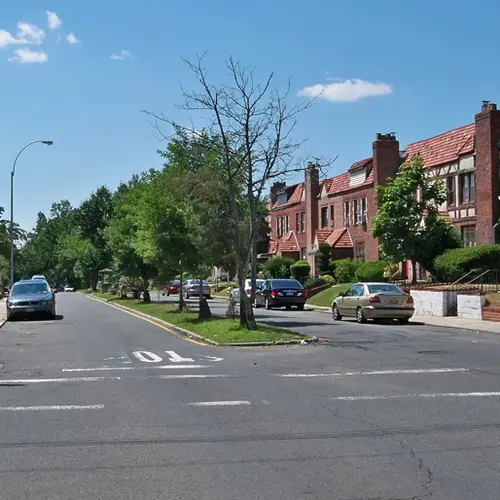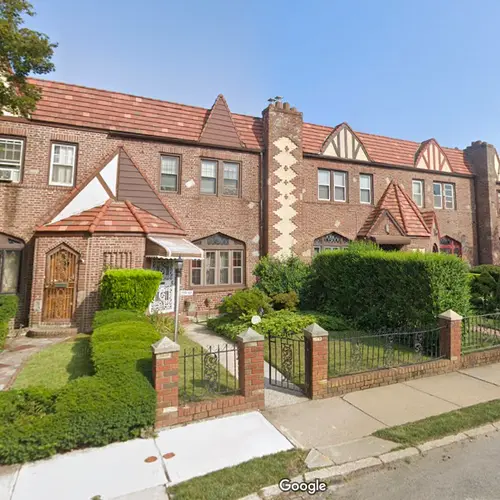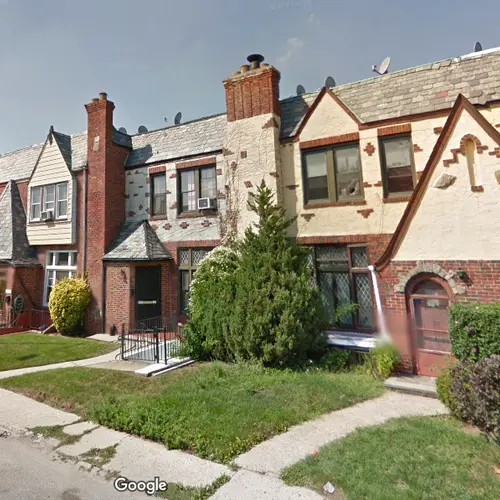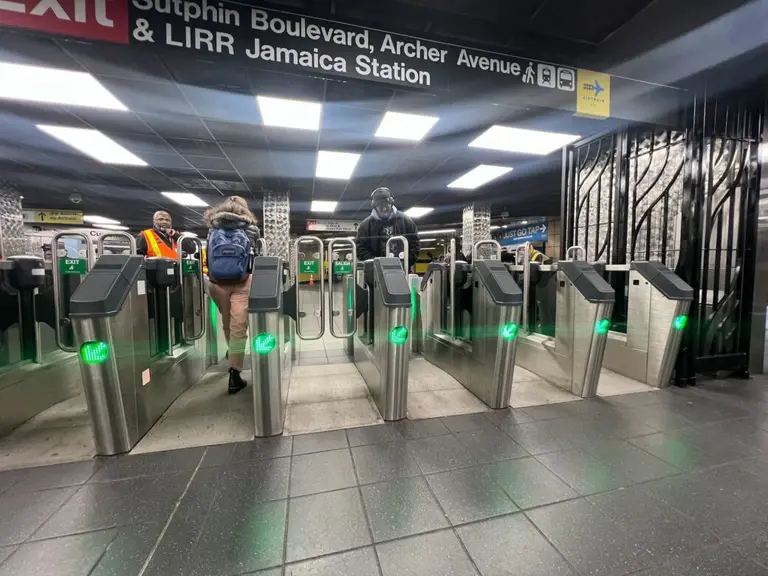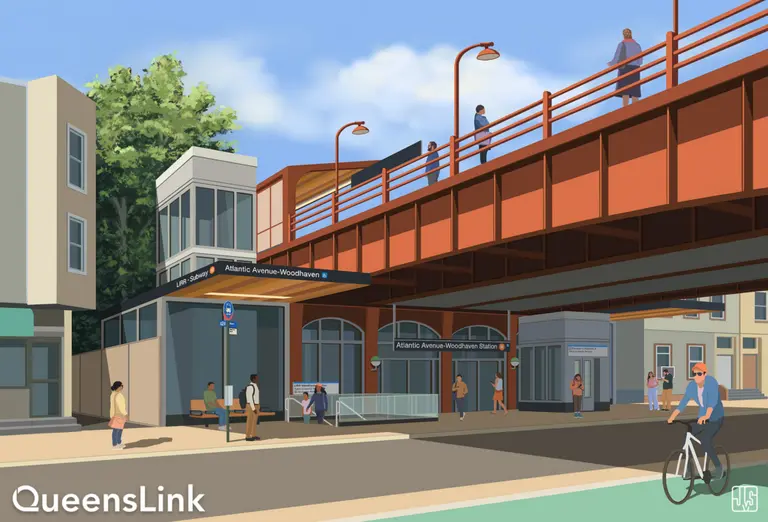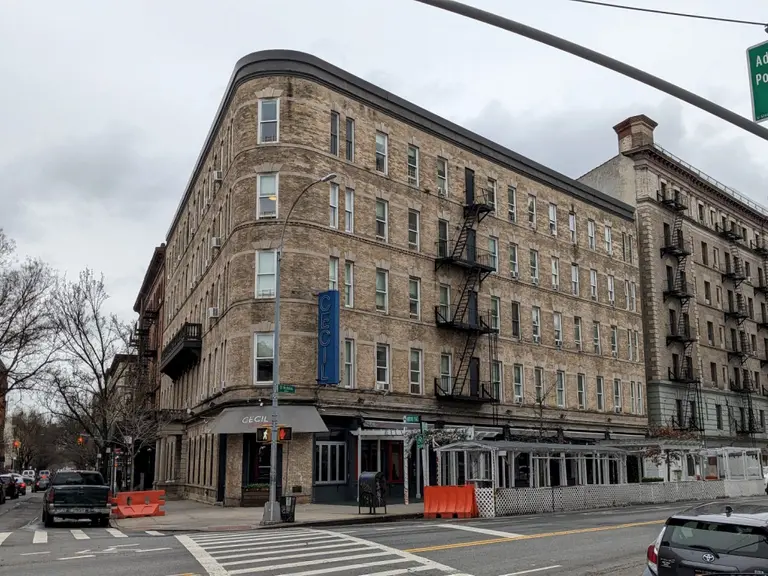Queens’ Cambria Heights could gain two Tudor-filled historic districts
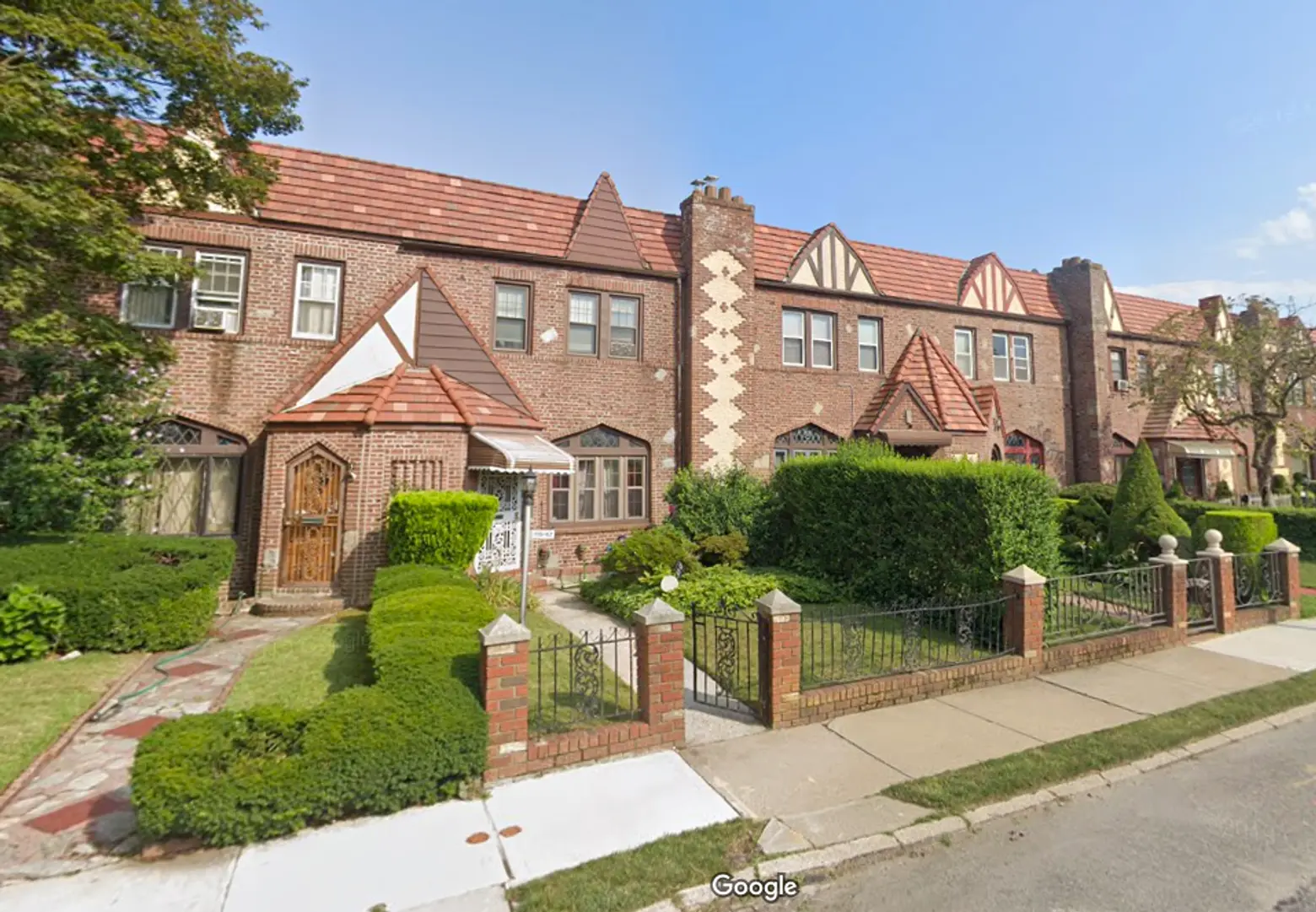
Street view of proposed Cambria Heights 222nd Street Historic District; Map data © 2021 Google
The Landmarks Preservation Commission on Tuesday voted to calendar two historic districts in the Queens neighborhood of Cambria Heights. The proposed 222nd Street Historic District and the 227th Street Historic District contain a total of 96 intact Tudor Revival rowhouses that incorporate the whimsical Storybook style. One of several prosperous Black communities in southeastern Queens, Cambria Heights is home to many single-family homes, but the two blocks considered for landmark status stand out for their architectural integrity and cohesiveness, according to the commission.
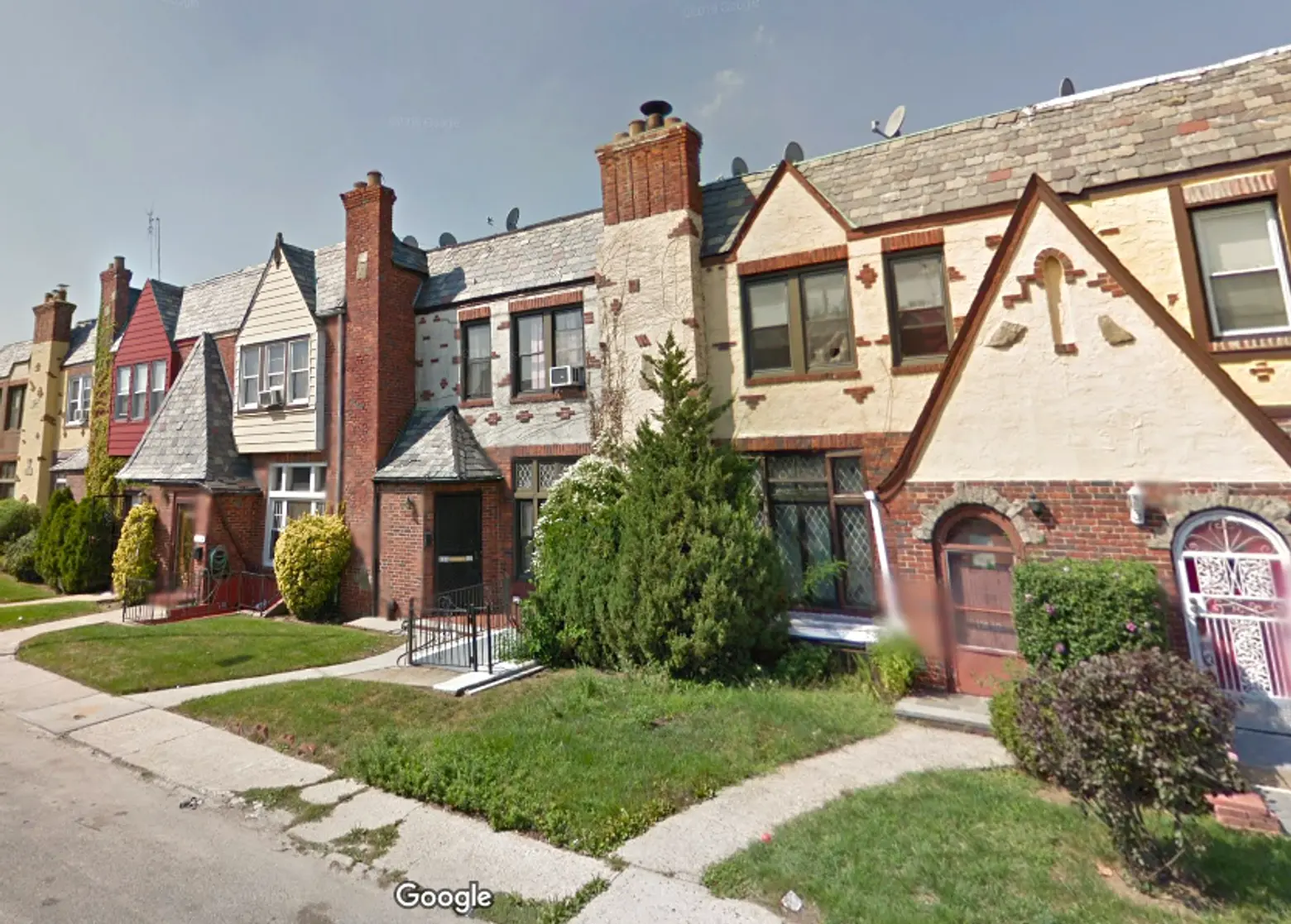
Street view of proposed Cambria Heights 227th Street Historic District; Map data © 2021 Google
The Landmarks research team started surveying Queens in 2019 to identify the development of row houses in the borough in the 1920s and 1930s. During that time, residential development spread outward onto former farmland driven by the automobile. The Tudor homes on the two proposed blocks have remained largely unchanged since their construction, according to the commission.
White middle-class New Yorkers first lived in the neighborhood, with Black families moving in the 1950s, overcoming hostility and racism from existing residents and real estate agents. Caribbean immigrants from Jamaica, Haiti, Trinidad and Tobago, Guayana, and Barbados later landed in Cambria Heights and the greater Jamaica, Queens area.
The proposed Cambria Heights 222nd Street Historic District includes 46 rowhouses located between 115th Road and 116th Avenue, all developed by Selected Homes Inc. Five blocks away, the proposed Cambria Heights 227th Street District contains 50 houses between 116th Avenue and Linden Boulevard.
The residences in both districts utilize an adapted style first seen in Jackson Heights in the 1920s, including driveways that lead to the back of the home and rear garages. Private garages were major selling points to prospective buyers by developers at the time. Placing the garage in the back of the home allows for uninterrupted, continuous front yards.
The homes combine a Tudor Revival style with elements of the Storybook style, which draws on Medieval, Arts and Crafts, and fantasy architecture features. With brick elements, brightly colored slate shingles, terracotta roofs, stone accents, and whimsically decorated chimneys, the blocks boast a “stage set quality,” like a fairytale coming to life, according to Kate Lemos McHale, the LPC’s Director of Research.
There are currently 11 historic districts in the borough of Queens. Only Staten Island has fewer landmarked areas in New York City, with three. Recognizing the contributions of the Queens districts aligns with the LPC’s new equity framework, launched early this year as a way to ensure diversity and inclusion in the designation process.
Now calendered, the districts will next move to a public hearing held by the LPC and then followed by a vote.
RELATED:
